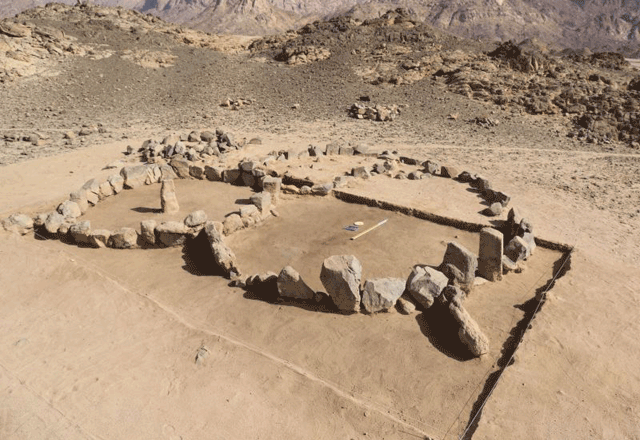New excavations in Wadi Abu Tulayha help understand the Late Neolithic cultural landscape in southern Jordan, noted a Japanese professor.
Wadi Abu Tulayha is located in the arid Al Jafr Basin, occupying the south-eastern end of Jordan, said Sumio Fujii from Kanazawa University.
“The site is located in the middle of Hamada, a flint pavement desert that extends in the north-western part of the basin. Topographically, it lies on a gently rolling plain that extends between the two major drainage systems in this area: Wadi Abu Tulayha to the east and Wadi Ruweishid ash-Sharqi to the west,” said Fujii.

The annual average precipitation is less than 50mm, and no natural water source is available, making the area very arid, Fujii highlighted.
Regarding structures found in Wadi Abu Tulayha by archaeologists, the linear-settlement-shaped open-air sanctuary, also called pseudo-settlement, is another landmark in Jafr, Fujii said.
“This unique structural complex is formed through a continuous lateral connection of a homogeneous unit, also called pseudo-house that combines a square to rectangular structure and a small round feature. In terms of technology, it is characterised by a two-rowed, upright-slab wall technique inherited from the Badia settlements in the southern Levant,” Fujii said.
He added that the reason why archaeologists define this type of structural complex as pseudo-settlement is that it is isolated in a dryland far from the sedentary cultural sphere and it seemingly takes on the appearance of a real settlement but, in fact, lacks traces of everyday life.
The pseudo-house is completely empty and includes neither hearths nor any kind of artifacts despite its large size, the archaeologist said.
“In view of the endless connection of the homogeneous pseudo-houses with a tomb-like small feature, one possible interpretation is that the pseudo-settlement was used for some group ritual, probably ritual for authorising the succession of the position of a group leader and thereby maintaining group ties; and to date, the following several examples have been attested in and around the basin,” Fujii said.
Moreover, a key to the issue is the mutual relationship among the three major components — settlements, barrages and open sanctuaries — and its diachronic transition, Fujii added.
The archaeological team excavated four cairns — small piles of stones used as a memorial — and their circular feature comprises two rows of stone, an internal row of big blocks and upright stones, where some of upright stones are almost one meter high, noted Fujii.
The tomb itself was marked by an arrangement of bigger stones in an elongated shape. The orientation of the four tombs followed a generally north-south axis, Fujii explained.
The study of the funerary phenomenon in the Jafr Basin has identified a widespread and consistent burial phenomenon of tumuli and tower tombs, the scholar said.
“Excavation of a limited, but fairly representative, sample of cairns has provided invaluable information with regard to building techniques and architecture,” Fujii said.
--
Source: the Jordan Times.
